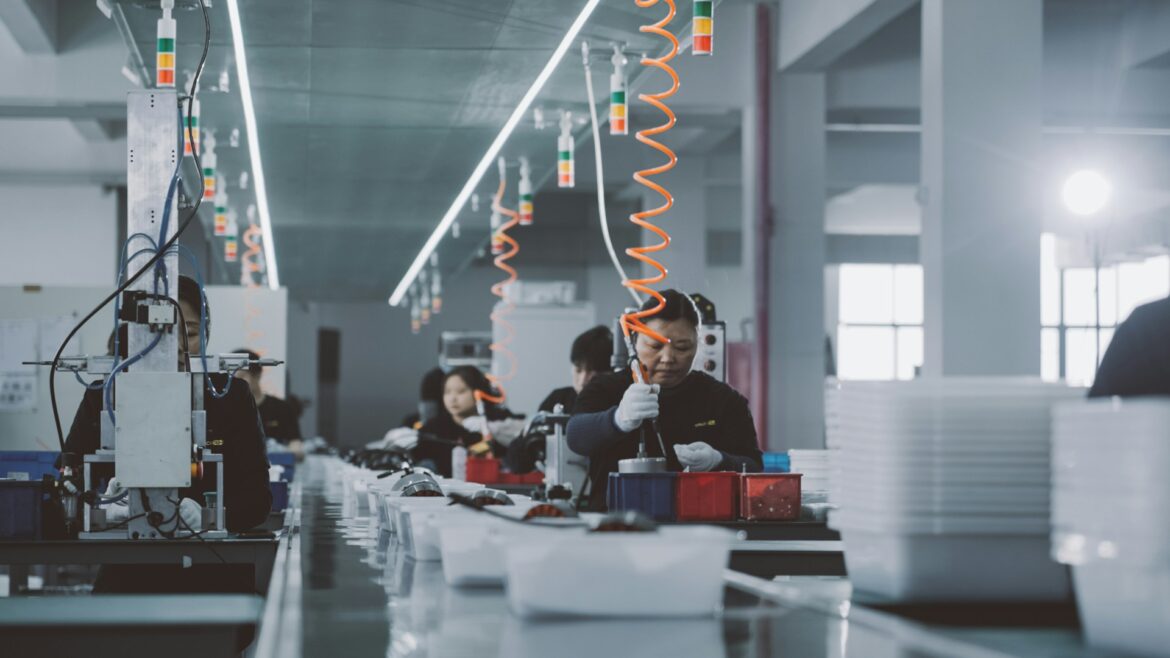The U.S. Manufacturing Sector Embraces Advanced Robotics in 2024
Driving Efficiency and Innovation
The U.S. manufacturing industry is witnessing a remarkable evolution in 2024, driven largely by the integration of advanced robotics. Various sectors, including automotive and consumer goods, are undergoing transformative changes in their production processes. Robots are not only enhancing the speed and efficiency of manufacturing but are also cultivating an environment ripe for innovation. As companies seek to remain competitive in an increasingly global market, the adoption of robotic technologies has become a cornerstone of operational strategy, enabling substantial improvements in productivity.
The Role of Robotics
At the heart of this manufacturing renaissance is robotics technology, which manufacturers are leveraging to automate repetitive and labor-intensive tasks. Advanced robotics provide heightened precision and lower operational costs that allow manufacturers to allocate resources more efficiently. Particularly noteworthy are collaborative robots, or “cobots,” which are designed to work alongside human operators. This partnership enhances overall productivity on factory floors and improves workplace safety. Industry experts, such as David Lee, an industrial engineer, highlight the significance of this shift: “Advanced robotics are revolutionizing manufacturing. They enable us to produce high-quality goods at scale while remaining competitive globally.”
Key Sectors Adopting Robotics
Among the various sectors, the automotive industry is taking the lead in adopting robotics technologies. Companies like Tesla and Ford are implementing these advancements into their electric vehicle (EV) production lines, where robots play critical roles from assembly to quality assurance. Beyond automotive manufacturing, the food industry is also embracing robotics, utilizing them for critical tasks such as packaging, quality control, and inventory management. Notably, partnerships between established manufacturers and robotics startups, such as Boston Dynamics, are emerging, fostering the development of tailored robotic solutions that meet specific industry needs.
Workforce Implications
As the adoption of robotics increases, so does the impact on the workforce. While these machines can reduce the need for manual labor, they simultaneously drive demand for a skilled workforce capable of programming, maintaining, and optimizing robotic systems. This paradigm shift necessitates a recalibration of workforce training programs to bridge the skills gap. Many organizations are investing in upskilling initiatives aimed at equipping employees with the knowledge and competencies required to thrive in a highly automated environment.
Challenges in Adoption
Despite the advantages that robotics offer, several challenges remain for manufacturers contemplating the transition. The high initial costs associated with acquiring and implementing robotic systems can deter some companies from making the leap. Additionally, concerns about potential job displacement due to increased automation continue to foster apprehension within the workforce. However, emerging models such as robotics-as-a-service (RaaS) are providing alternative pathways for adoption. RaaS allows companies to lease robotic systems rather than buy them outright, significantly lowering the financial barrier to entry and enabling a wider range of companies to stay competitive.
Future Outlook
Looking forward, the outlook for the U.S. manufacturing sector in 2024 is optimistic as it increasingly embraces advanced robotics. The integration of these technologies is expected to result in significant growth and innovation across multiple industries. As manufacturers continue to leverage robotics to enhance efficiency, improve quality, and remain competitive, the sector is poised for a transformation that will redefine production methodologies and contribute to overall economic growth.
Conclusion
The integration of advanced robotics into the U.S. manufacturing sector marks a significant turning point in operational practices and strategic planning. As industries adapt to this technological evolution, the challenges of workforce implications and financial barriers will require thoughtful solutions. Ultimately, the sustained growth and innovation driven by robotics will shape the future of manufacturing in 2024 and beyond, fostering an environment where efficiency and technological advancement go hand in hand.
FAQs
What are collaborative robots (cobots)?
Collaborative robots, or cobots, are designed to work alongside human workers, enhancing productivity and safety in manufacturing environments by taking over repetitive tasks while allowing humans to focus on more complex operations.
How do robotics improve manufacturing efficiency?
Robotics enhance manufacturing efficiency by automating repetitive tasks, reducing errors, and speeding up production processes, which ultimately lowers costs and improves quality control.
What impact do robots have on jobs in manufacturing?
While robots can displace certain manual labor positions, they also create new job opportunities in programming, maintenance, and engineering, leading to a demand for a more skilled workforce.
What is robotics-as-a-service (RaaS)?
Robotics-as-a-service (RaaS) is a business model that allows companies to rent or lease robotic systems instead of purchasing them outright, making robotic technology more accessible to manufacturers of all sizes.
Which industries are adopting robotics the fastest?
The automotive industry leads the adoption of robotics, particularly in electric vehicle production, while other sectors such as food manufacturing and consumer goods are also rapidly integrating robotic technologies into their operations.

